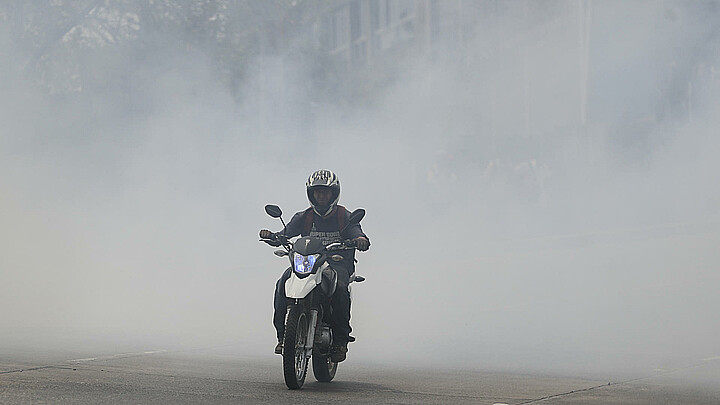Health
SPECIAL REPORT: United Nations says hunger in Latin America up 30% since 2019
Countries suffering from political turbulence such as Haiti, Venezuela, Nicaragua, Guatemala, Honduras, Bolivia and Ecuador among highest
December 1, 2021 11:22am
Updated: December 1, 2021 2:36pm
Hunger in Latin America and the Caribbean reached a 20 year high, after the number of people suffering from hunger rose by 30% from 2019 to 2020, a new United Nations report warns.
According to the Food and Agriculture Organization of the United Nations (FAO), the number of individuals living with hunger increased by 13.8 million in just one year, reaching an unprecedented 59.7 million people in the region.
This suggests the prevalence of hunger in Latin America and the Caribbean stands at an overall rate of 9.1% – just slightly below the world average of 9.9 percent.
“We must say it loud and clear: Latin America and the Caribbean is facing a critical situation in terms of food security,” said Julio Berdegué, the FAO’s assistant director-general and regional representative for Latin America and the Caribbean in a recent Pan American Health Organization (PAHO) report. “There has been an almost 79% hike in the number of people living in hunger from 2014 to 2020.”
Yet while some U.N. experts believe the COVID-19 pandemic is partially to blame for the two percentage points increase between 2019 and 2020, they warn that hunger has been on the rise since 2014 – well before the coronavirus stopped the global economy in its tracks.
“Although the pandemic has exacerbated the situation, hunger has been on the rise since 2014. We must fix deep vulnerabilities in our food systems, make them more inclusive and sustainable and ensure they deliver wellbeing for the people that feed our societies,” Rossana Polastri, the International Fund for Agricultural Development’s director for Latin America and the Caribbean told PAHO.
According to the report, the countries that have been most affected by the rise in hunger from 2018 to 2020 were Haiti, Venezuela, Nicaragua, Guatemala, Honduras, Bolivia and Ecuador.
It is certainly of note that these countries have suffered political turbulence within the dates of the study– often at the hands of governments hostile to free-markets and democratic norms.
Of the list of most affected countries, Guatemala and Honduras, along with El Salvador, are collectively known as the Northern Triangle and are the starting points for migrant caravans which make their way to the United States’ southern border.
The stability of The Northern Triangle is especially important to the Biden Administration, which has repeatedly discussed the need to address the “root causes of migration” in Central America, ultimately committing $4 billion to that end.
Overall, however, Central America experienced the largest increase for the total regional population––2.5 percentage points––reaching a 20 year high of 10.6%, or 19 million people adding plight to a region continuing to suffer from natural disasters, political instability, drug related violence and exodus of working-age adults.
Economists have long predicted Latin America would eventually experience the globe’s highest rates of inflation with rates expected to average 11.9% in 2021 and 10.4% in 2022.
Paradoxically, as hunger rates increase, childhood and adult obesity have also been on the rise across the region.
“In Latin America and the Caribbean, COVID-19 has made a pre-existing malnutrition crisis worse. With services disrupted and livelihoods devastated, families are finding it harder to put healthy food on the table, leaving many children hungry and others overweight,” UNICEF Regional Director for Latin America and the Caribbean Jean Gough told PAHO.








